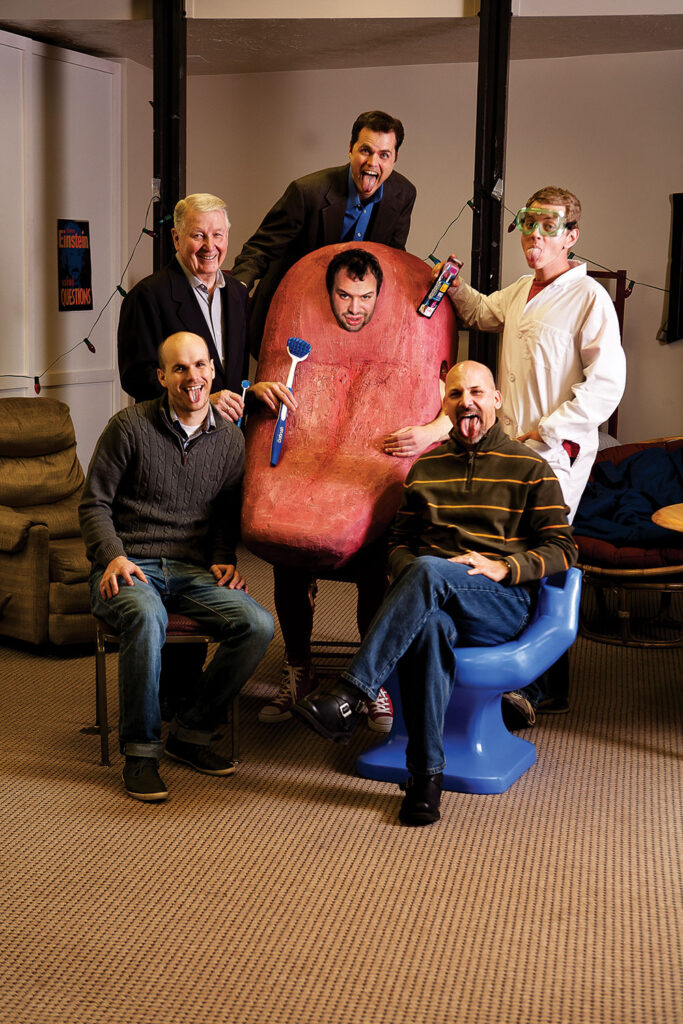
Provo-based Orabrush is the UV50’s most watch-worthy wonder — and 35 million people agree with us. The youthful company’s mammoth fan base sprouted from a little site called YouTube. After attempting to sell the tongue cleaner here, there and everywhere, 75-year-old Dr. Bob Wagstaff (Orabrush’s inventor) connected with BYU student Jeff Harmon and set out to become the bad breath brigade. Now, almost two years later, Orabrush is hailed as a viral marketing darling, its multimillion-dollar sales have exploded onto the scene and major retailers are coming to them for a change. Mark our pages: This is no one-YouTube wonder.
In 2000, my wife and I served as LDS mission presidents in the Philippines. While we were there, I got a call from members of the church saying there was a problem with my missionaries. “The missionaries are offending people,” they told me. And I thought, “Oh, dear. What are they doing?”
They had bad breath. We followed up with a teeth-cleaning training, which led me to do some Internet research. To my surprise, I found that 90 percent of bad breath comes from the tongue.
I started working on a prototype that would eliminate bad breath. I knew there had to be a better way than toothbrushes and tongue scrapers. I later got together with an attorney, and we eventually landed ourselves a patent.
Once we had the patent, it was time to think how we’d bring it to market. I tried to sell the rights to the patent — but with no success. Then I tried to market it myself. We did an infomercial on TV, spent about $40,000 and did about $4,000 in sales. It was a disaster.
I tried to get it in retail stores, but people didn’t even know what it was. Then I turned to the Internet. I got together with a group who said they could market it. And for every $2 we spent, we got $1 in sales. Another disaster.
I had spent more than half a million dollars of my own money on this project. But I didn’t want to give up on it when I knew it worked. I just needed to get the story out there.
I went to the BYU business school and talked with a professor. I told him I needed help. He suggested we turn it over to one of the senior classes.
By this time it was April 2009, and the group working on my product invited me to come to class. The group said that first, Orabrush is not a strong enough product to stand on its own. And second, it was no use trying to sell it on the Internet. Only 8 percent of people would buy this kind of product on the Web, they said.
Then senior Jeff Harmon raised his hand. He said, “I just did a calculation, and 8 percent is a few million people. Seems to me like you’d want to focus on them.”
I was fascinated. And when class was over, I went to talk to him. Jeff looked me in the eye and said, “Dr. Bob, I can sell your product on the Internet.”
By August, we had our first YouTube video shot and website redesigned so people could buy Orabrush on the site. It just catapulted from there.
We’ve sold more than a million of them now. We have more than 35 million views on our YouTube videos, and we are at 270,000 fans on Facebook. We’re in 20 Walmart stores here in Utah, we’re approved by all the major retailers and sales have been fabulous.
It’s been a case of reverse marketing. Normally you put the product in the store and advertise that it’s there. But what we’ve done is create interest and offer education. We taught people about bad breath in a humorous and memorable way. And then we told them where they could buy Orabrush.
I was really enamored by the idea that everyone has a tongue. Everyone can have bad breath, which means everyone in the world is a potential customer. That’s what kept me going. That’s what kept me taking money out of my retirement fund. It’s one thing to sell something and make money. But to have a product be beneficial to people? It’s a thrill.
Everyone can have bad breath, which means everyone in the world is a potential customer.